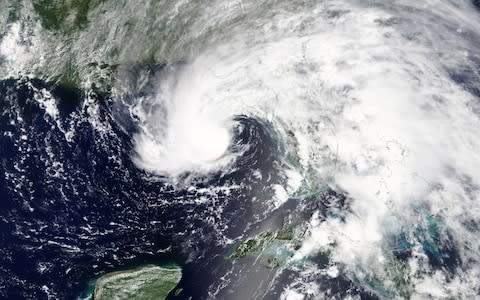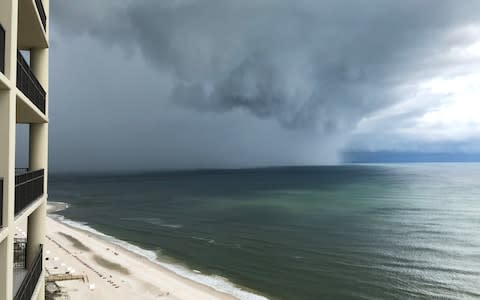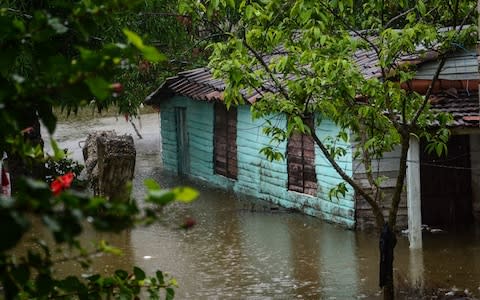TV news crew killed covering subtropical storm Alberto as it hits US mainland

A TV news anchor and a photojournalist were killed on Monday when a tree fell on their vehicle as they reported on the first named Atlantic storm of the year to hit the US mainland.
They died in North Carolina on the fringes of subtropical storm Alberto which made landfall in Florida.
WYFF News 4, based in Greenville, South Carolina, named them as Mike McCormick, a presenter, and Aaron Smeltzer.
Geoffrey Tennant, the local fire chief, said their 4x4 was still running when emergency services found it.
He said the ground was saturated and the tree’s root system had failed.

"I have never seen an event like this one," he said.
Mr Tennant added that he had only recently spoken to the team.
"It personally affected me a little bit because I had done an interview with Mr. McCormick about 10 minutes before we got the call, and we had talked a little bit about how he wanted us to stay safe and how we wanted him to stay safe," he said.
The station's news report included a tribute to the pair.
“All of us at WYFF News 4 are grieving," it said. "We are a family and we thank you, our extended family, for your comfort as we mourn and as we seek to comfort the families of Mike and Aaron.”

No other injuries have so far been reported.
In Panama City, Assistant Fire Chief Gary Swearingen told Reuters the rain and wind knocked down trees but did not require any rescues.
Alberto – the first named Atlantic storm of the year – barrelled ashore at Laguna Beach with maximum sustained winds of 45mph (72km/h), according to American meteorologists.
Heavy rainfall from #Alberto poses a serious inland flooding threat to a large portion of country over the next couple days. Here are the flood-related watches, warnings & advisories in effect for the Southeast, Tennessee Valley & Ohio Valley as of 6:22pm ET. #TurnAroundDontDrownpic.twitter.com/OHMdFiw5Fy
— NWS (@NWS) May 28, 2018
Thousands of people had already been evacuated from Florida’s Gulf of Mexico coast.
The storm system began moving inland at about 9mph but is expected to weaken quickly now it is no longer drawing energy from warm seas.
However, forecasters are warning that heavy downpours could cause life-threatening flash floods across north Florida and other southeastern states.

As much as 12 inches could hit some areas before Alberto moves on.
Several thousand customers lost power during the day, according to to Florida’s Division of Emergency Management.
The hurricane season does not officially begin until June 1, but memories of last year’s devastating series of storms remain fresh.
Many parts of the US are still recovering, particularly Puerto Rico, which was badly damaged by Hurricane Maria in October.

